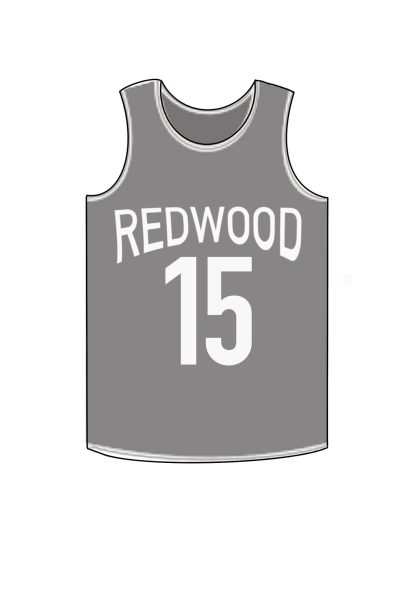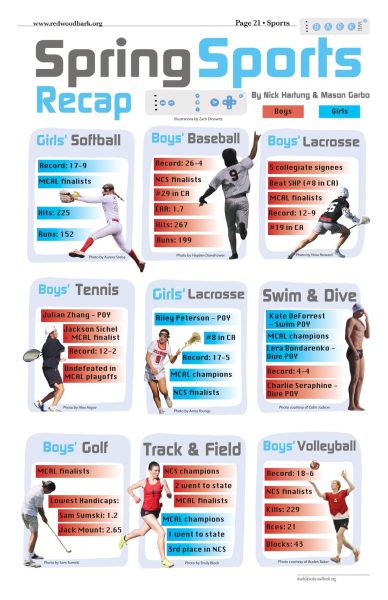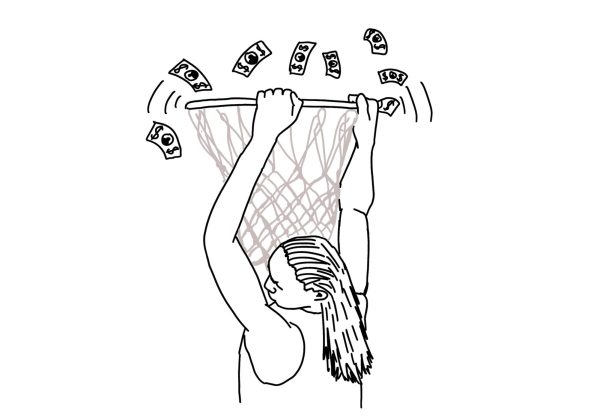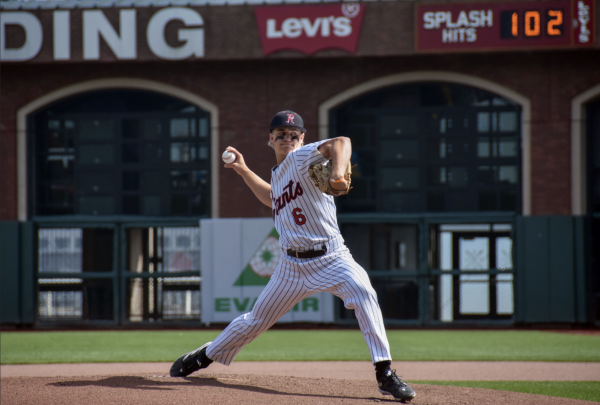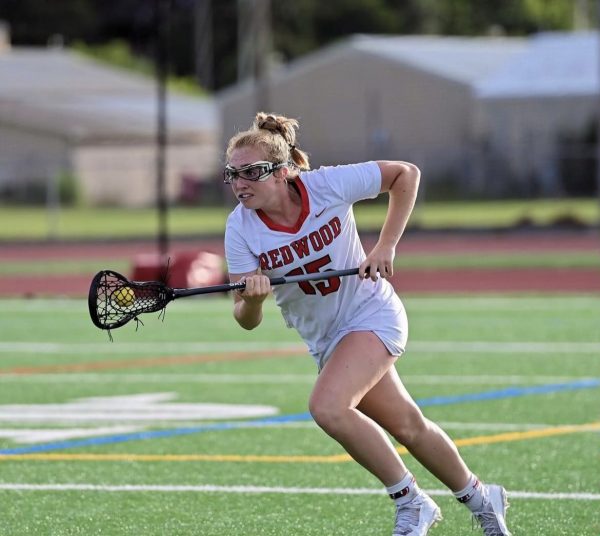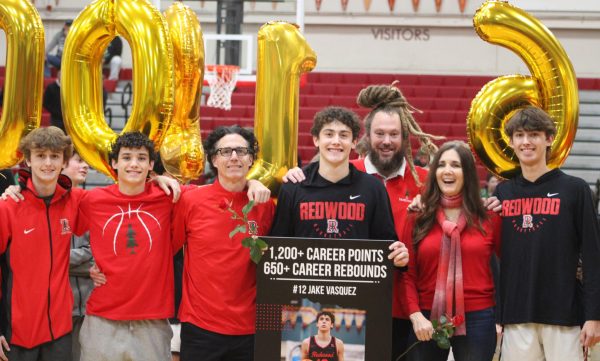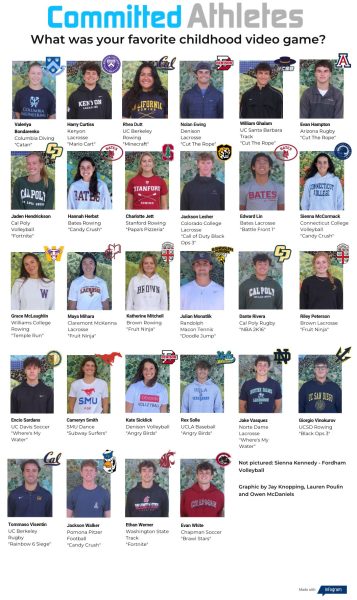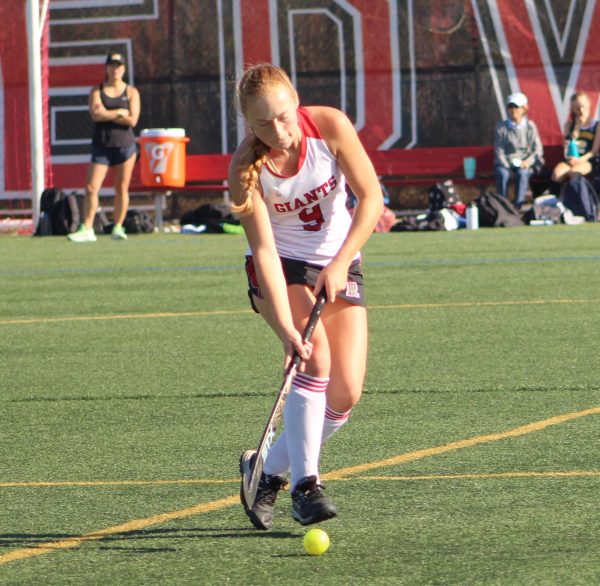College is full of athletic opportunities: which is for you?
April 5, 2021
The swish of a soccer ball catching the back of the goal’s net is all it takes to initiate an explosion of pandemonium. Thundering stands, cheering parents and classmates, teammates jumping on their star player; the scenes of a high school sports game are familiar to every individual. The question for most high school student-athletes arises after they kiss the ground, hit the home run or beat the buzzer: what now?
The college application season raises a different level of stress for many prospective college athletes. Many promising student-athletes involved in Redwood sports are scouted for recruitment each year, and some decide to commit to a college or university under an athletic scholarship or contract if offered one. Seniors involved in sports can decide whether or not they opt for a more competitive and professional environment such as a college varsity team or an intramural option. Several Redwood alumni have played both varsity and intramural sports during their time after high school in an effort to continue their hobby, get outdoors and be a part of a community.
Redwood alum Justin Neustaetter spent his freshman year playing for the University of Wisconsin-Madison after walking on. However, after receiving a new wave of players the next season, the team let him go. Before taking his position on his fraternity’s intramural team, Neustaetter captained the Redwood Boys’ soccer team his senior year, and has played at various levels of competitiveness since then.
“I wasn’t exactly one of the best players, so I didn’t get to play on the Division [I] team in terms of games. Being on the intramural team allowed me to enjoy playing games again and having that more competitive aspect. Even though there was a lot of competition on the [Division I] team, there was nothing like a game scenario [for me],” Neustaetter said.
Committing to a varsity sport in college requires extreme dedication, including the devotion of more time, more practices, more games and less scheduling flexibility, making it challenging for student-athletes to balance them with their academic and social lives.
“I’m studying engineering [at the University of Wisconsin-Madison], so [I had a] pretty good course load to start out with. [Varsity] fully changes your schedule and how you go about with free time and just hanging out with people,” Neustaetter said. “It takes a toll on you, physically and mentally, [whereas] with intramural there’s a lot more enjoyment in terms of just playing because you want to play for fun.”
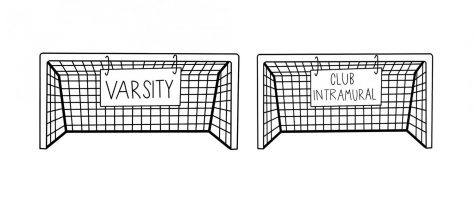 Though Neustaetter enjoys playing intramurally through his fraternity, he hopes to continue playing through a club team in the upcoming season to pursue his found equilibrium between sports and academics.
Though Neustaetter enjoys playing intramurally through his fraternity, he hopes to continue playing through a club team in the upcoming season to pursue his found equilibrium between sports and academics.
“Now I’m able to be involved in student organizations. I’ve joined a couple of clubs, and I’m holding a leadership position in another council. Now I have multiple different things that I have to think about, which is a lot more beneficial for me and my career,” Neustaetter said.
While some athletes find a certain level of stress in committing to a sport, many athletes at a high school level use their sport as an outlet to release academic pressure. Current Redwood athletes considering their options for continuing their sport at the collegiate level have to take into account the university life they want to build for themselves. 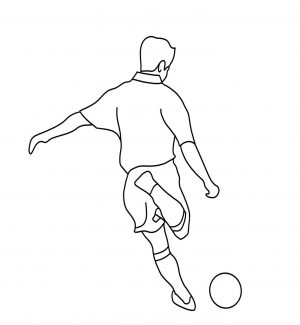
Junior Sophia Pero, a member of the girls’ varsity soccer team, raises her concerns with advancing her commitment to the sport.
“I think a big part of [my decision] would be both my academic rigor and just kind of socially. If it was a helpful factor for meeting people and I enjoyed it, I would definitely do [varsity]. But, [college] varsity is very time-consuming, and I don’t really think I’m going to make a career out of soccer. I think that club or intramural would be best because I still want to be able to continue soccer since I’ve put so much time into it,” Pero said.
In spite of this widespread time allocation concern among student-athletes, there are many solutions. On a case-by-case basis, some athletes struggle with the mental pressures of playing at such a competitive level. Many students choose to join a club or intramural sport to continue playing their sport while maintaining a more manageable schedule.
Other students crave the drive, spirit and reward of playing competitively, such as junior varsity soccer player Lucy Downing.
“I definitely value the team aspect of it. You get really close with everyone on your team … I’ve always had just a passion for soccer, and I love getting out there and being able to work hard on something and seeing results,” Downing said.
Although team sports play a significant role in the lives of many high school students, the continuation of a commitment of this sort can detract from social and academic experiences. As students’ seasons start up again, many will question their futures on the field.
“[For varsity], you have to really love the sport and want to be at a really competitive level. Some people will make a career out of it, and other people, if they just enjoy playing the sport, they have to want to be the best they can [be] and be able to pursue their goals,” Neustaetter said.
Every college has various options for student-athletes interested in different methods of continuing or starting a sport, whether that is continuing at a fast-paced, highly competitive level or in a way more achievable by academically-focused team members. College is where students are able to discover and pursue their passions, however it is also the place where people categorize sports as a career, a competitive outlet, or a mere pass-time, establishing what kind of a role athletics will play in their future lives.








